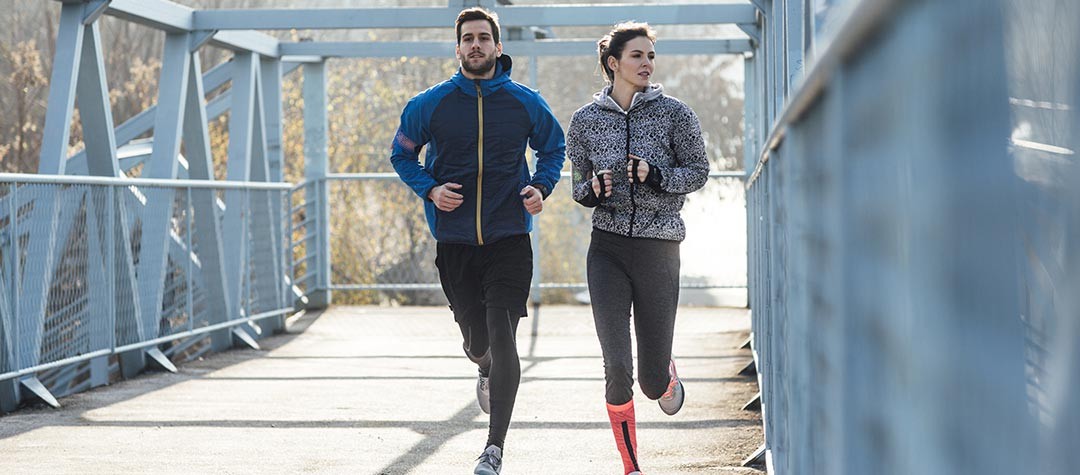Walking is not only a great introduction for sedentary people looking to get started in running, but it also has benefits for the regular runner.
As a beginner with little or no running experience, walking is a fantastic way to start getting into the sport. Building up from a small or non-existent base means you need to get used to time on your feet and that is where walking comes into its own. But as you progress through the various running distances and target various races, walking is still a great training tool to help you advance, improve your endurance and increase your physical and mental resilience.
Give your body a break
There’s little doubt that the constant pounding of pavements and highways when you run can have a debilitating effect on joints. Your knees and ankles will really start to feel the effects as you build up your running, which is why it’s such a good idea to give yourself, and your body, a break with walking.
This can manifest itself in two ways. Either make one of your running days a walking day, or integrate periods of walking into your training sessions. Either way you and your body will start to appreciate the benefits and get stronger because of the prolonged periods of time on your feet.
A walk is also a brilliant recovery tool. If you’re feeling stiff and sore after a long training run, get your heart rate up by going for a decent walk. It will help to get the blood pumping around your legs, which will help to repair any micro muscle tears.
Break up the monotony of your training
Doing one thing all the time can be tough. The constant fight with yourself to (a) do it and (b) do it as well as you did the day or the week before, can be relentless and exhausting.
By including walking in your regime, you’re giving yourself a break from a monotonous routine and taking the pressure off physically and, more importantly, mentally. A lot of runners use walking as a way of cross training , to help maintain their fitness and keep their training fresh.
So instead of doing a run for 45 minutes, why not double the amount of time on your feet and go for a 90-minute walk instead? Hit the park, the ocean or head to one of your favourite places. You’ll find that the break from running will do you the world of good and recharge your batteries.
You can use it to spend quality time with friends and family who don’t have the running bug just yet. And remember the time spent on your feet will help build your endurance as you target those longer distances.
Boost your endurance
Combining a run/walk strategy is an essential way of training life for ultra runners who focus on running huge distances. But it is also extremely effective for runners training for a marathon because the walking element helps you boost endurance.
Walking allows you to push your body to go further for longer, in terms of distance and time...
Walking allows you to push your body to go further for longer, in terms of distance and time, which will help you build methodically towards a goal like a marathon. If you try to go at the training too hard too quickly, your body will eventually rebel and breakdown through injury.
With a walking element, the idea is that as the weeks of training go by, you begin to feel stronger and more confident. As a result, you’ll gradually begin to decrease the periods of walking and run for longer instead. And anything that helps avoid injury is always a welcome bonus.
Make the step up
The walk/run approach isn’t restricted just to marathon and ultra runners. The same is true of any attempt on a new distance. For instance, if you’ve worked your way up to a 10k and enjoyed the experience, you may well be tempted to make the next step up to a half marathon.
Doubling the distance of any race can be a fairly daunting experience and it can often put some runners off. So again, start your training with a walk/run framework and you may well find that the daunting will seem doable.
Injury rehabilitation
Walking is an excellent way of getting yourself back to full fitness after an injury. Depending on the nature of the problem you’ve had, a prolonged spell on the sidelines means it will take a while to get back to where you were when the injury occurred.
The best way to tackle that process can often be to walk your way back into training, literally. But remember always make slow, steady increments in your training when you get the go-ahead from your physio. It’s important not to rush back too quickly or you risk a setback to your recovery.
Go faster
There is a fascinating school of thought which suggests that a combination of walking and running actually helps runners go faster. A study published in the Journal of the Royal Society Interface in 2013 revealed that runners conserve energy if they walk and run.
There’s little doubt that a brisk walk after a period of intense effort, allows the body to recover and reboot. So a strong run for a mile (1.6km) followed by a brief walk of around a minute, can be sufficiently refreshing that your effort levels increase for the next interval segment. The break in running can also correct any running form and technique issues which again, can assist in faster times.














